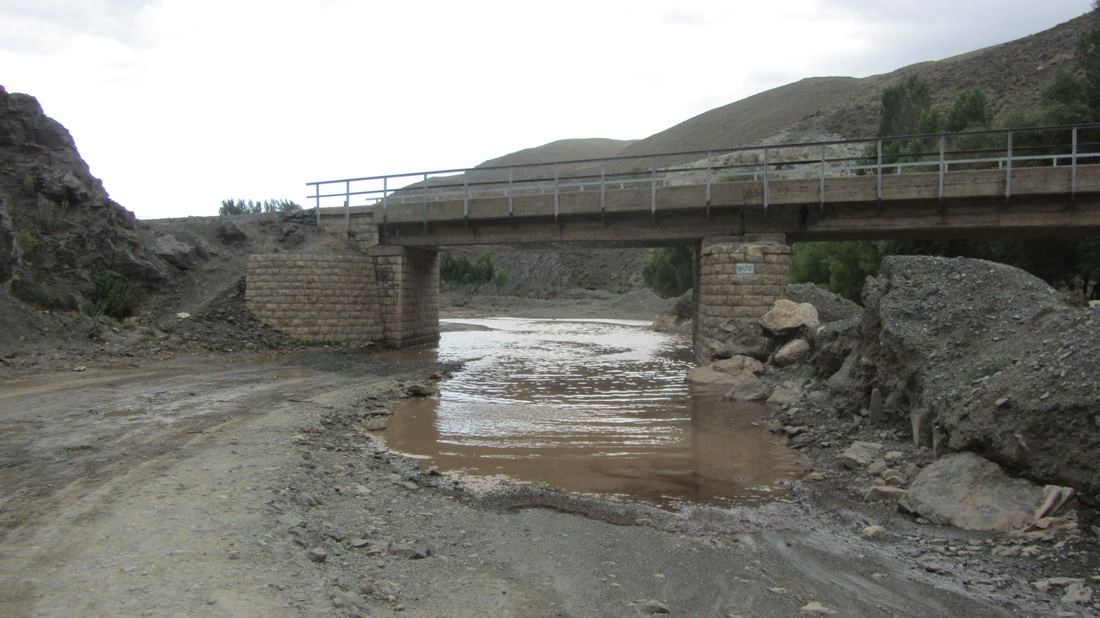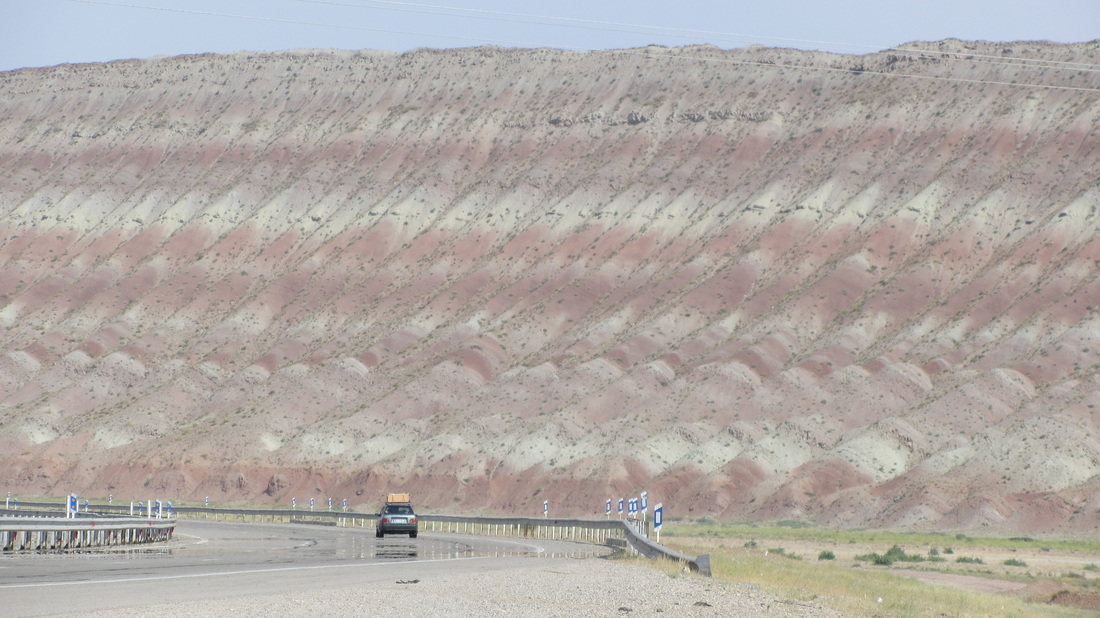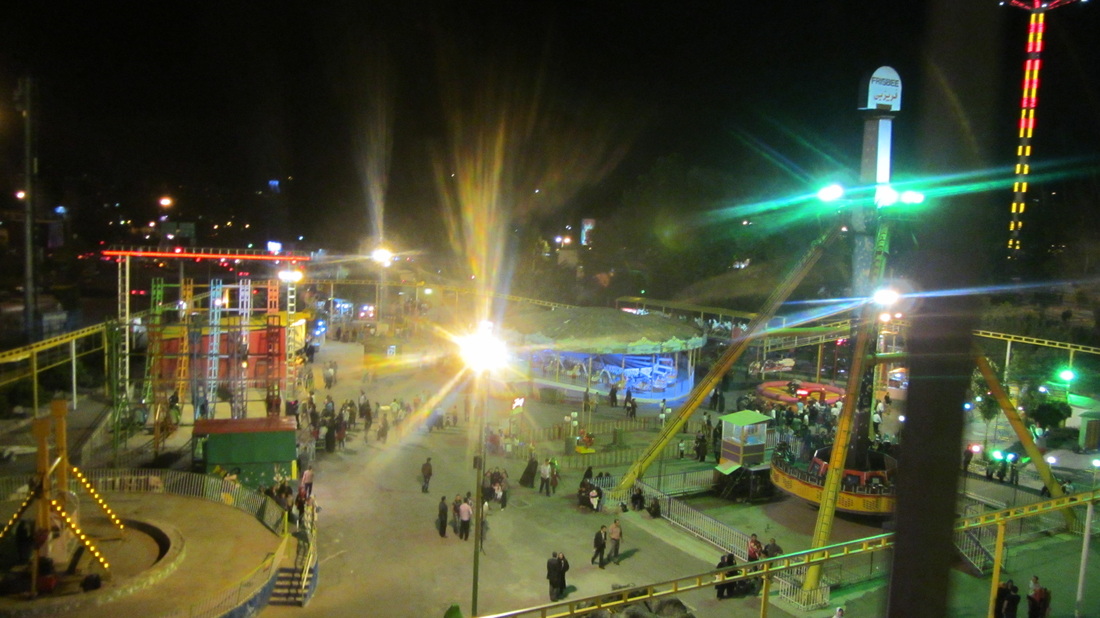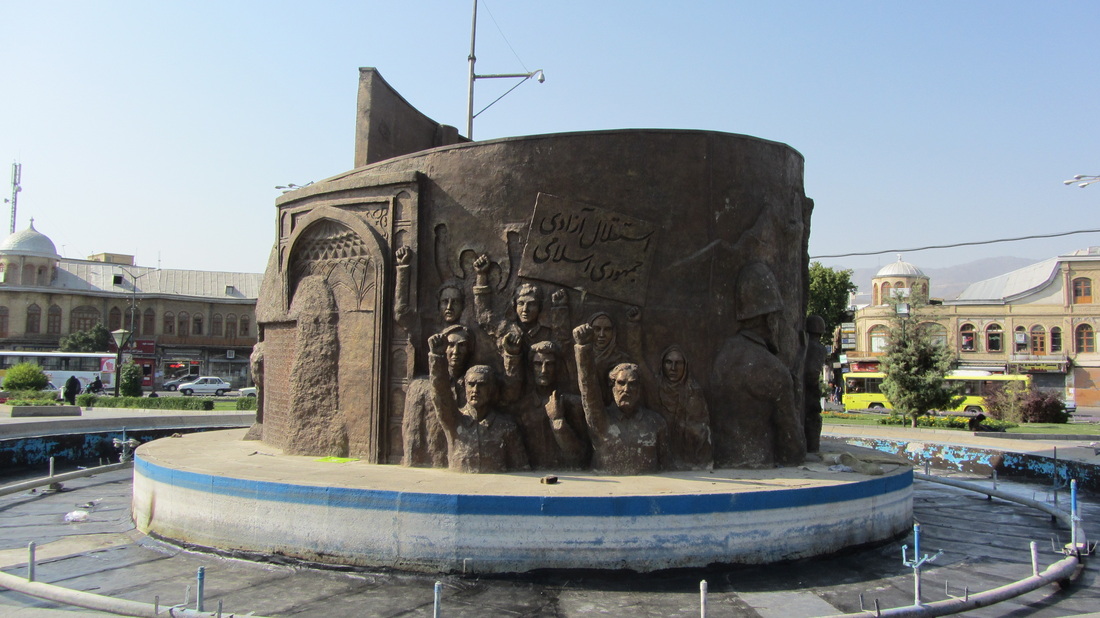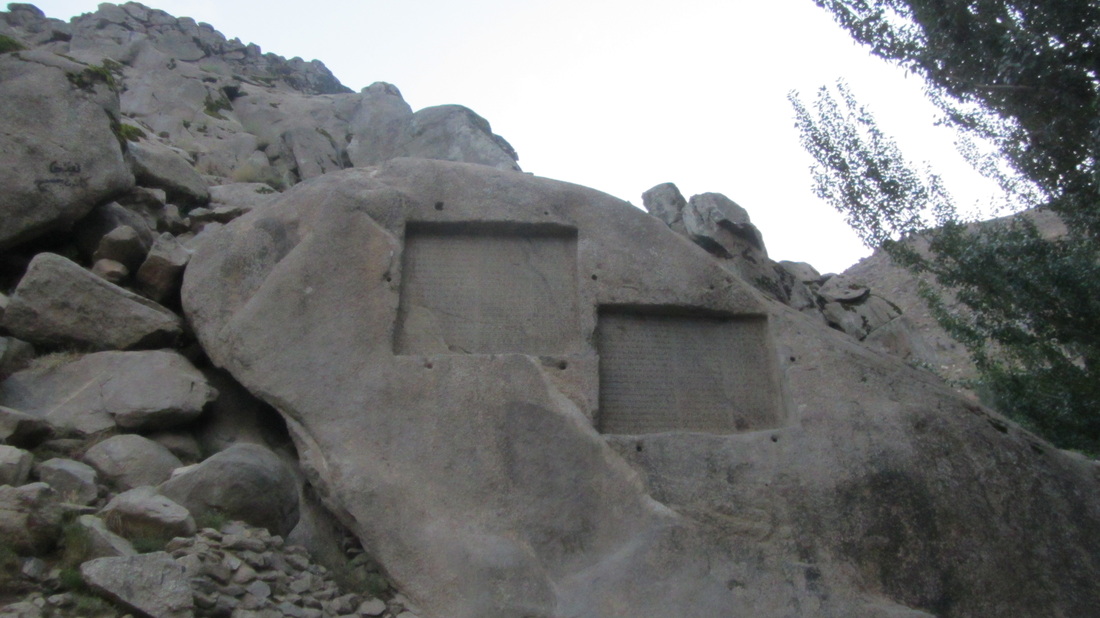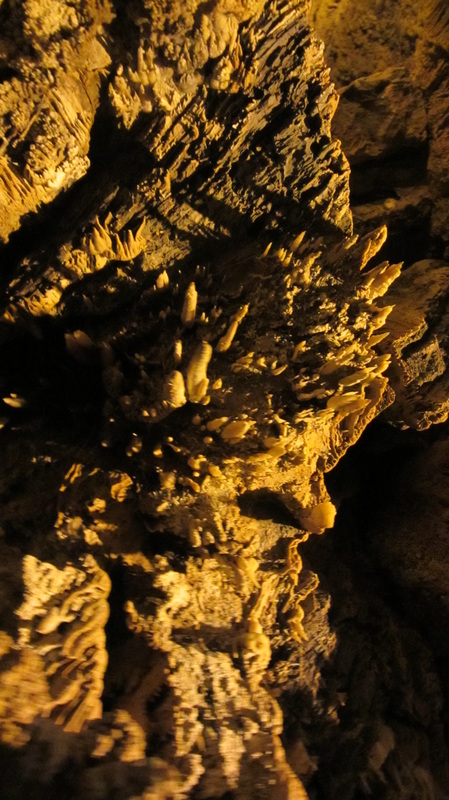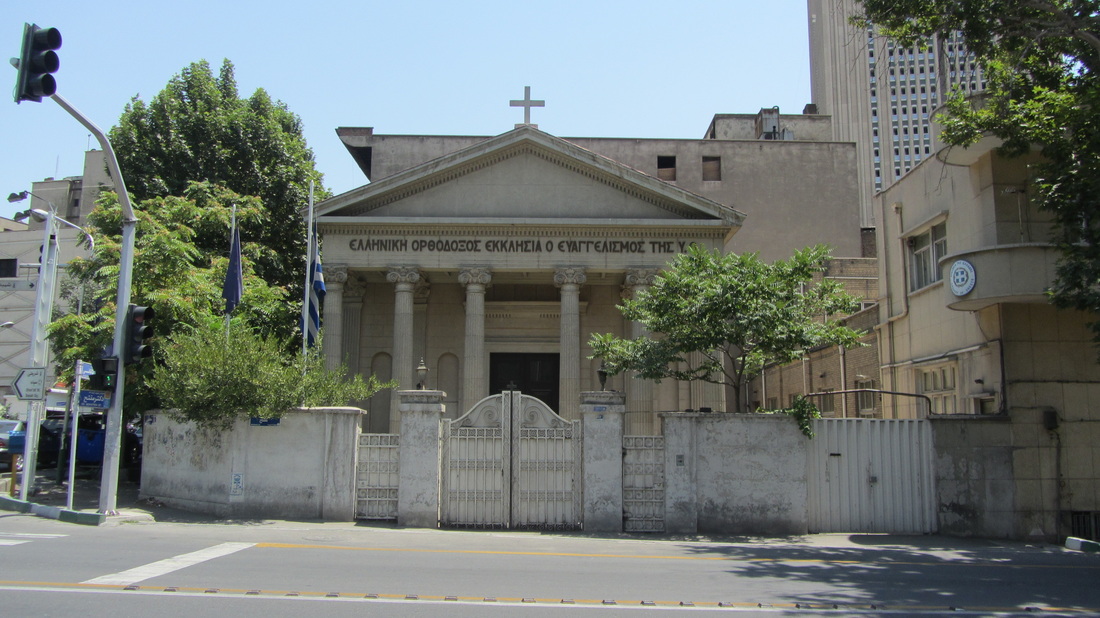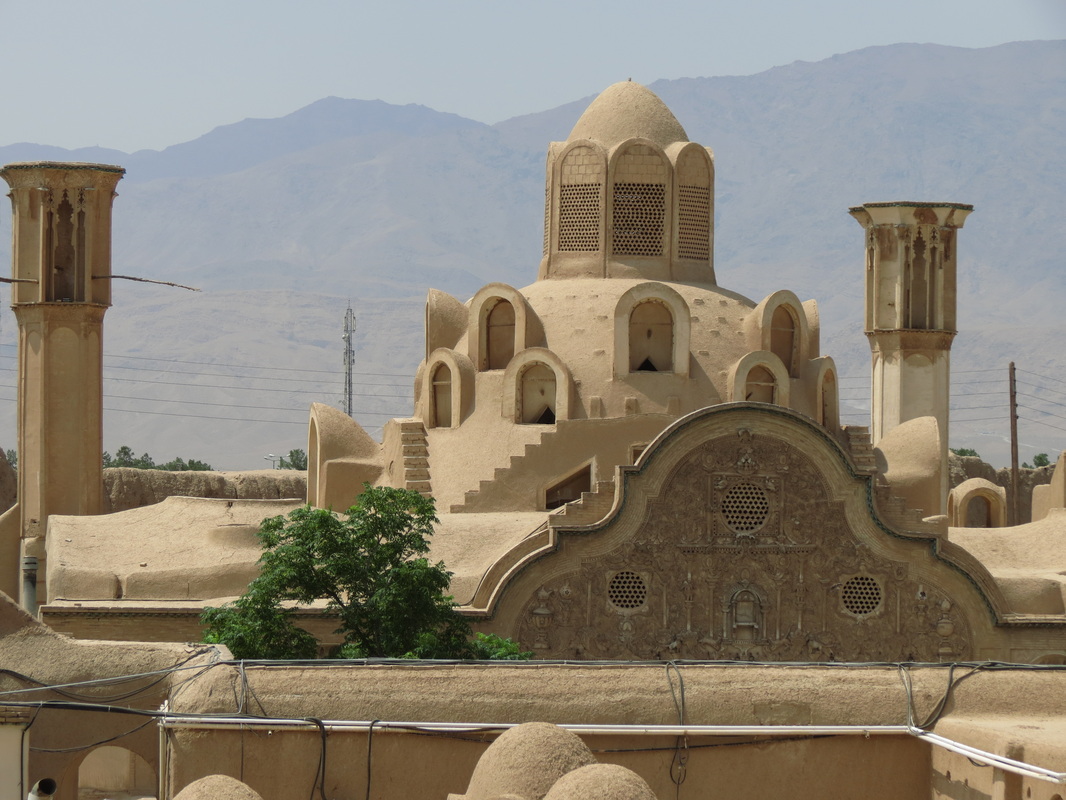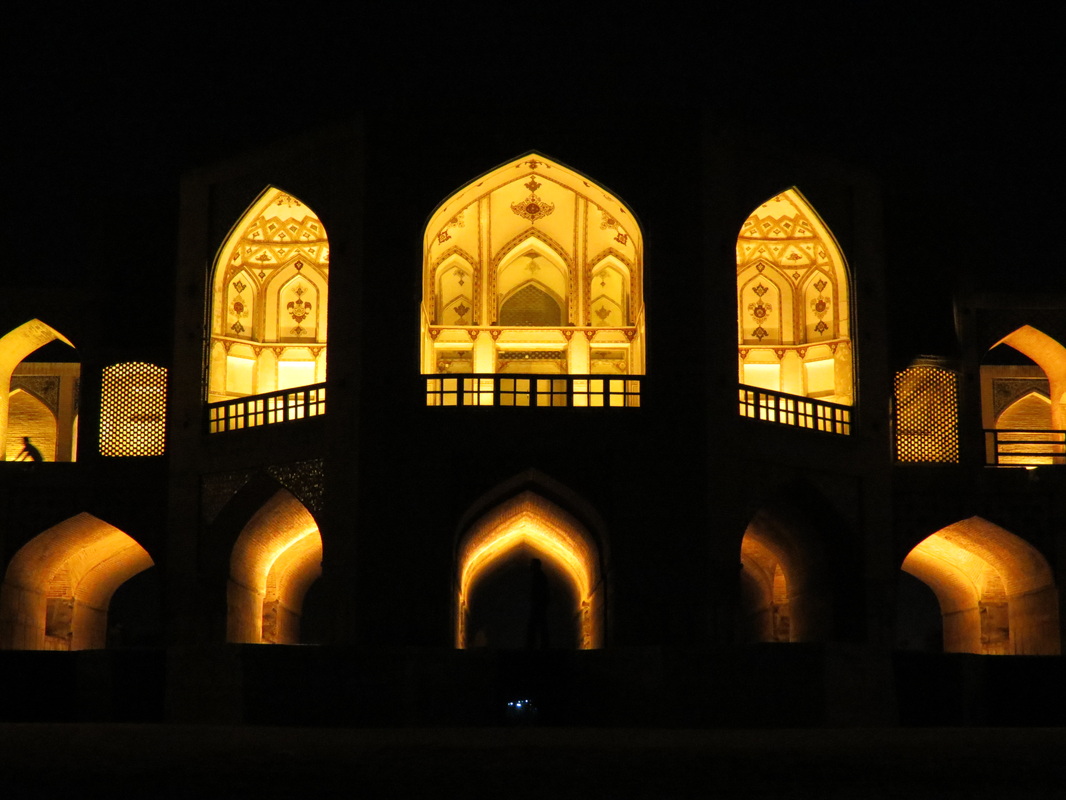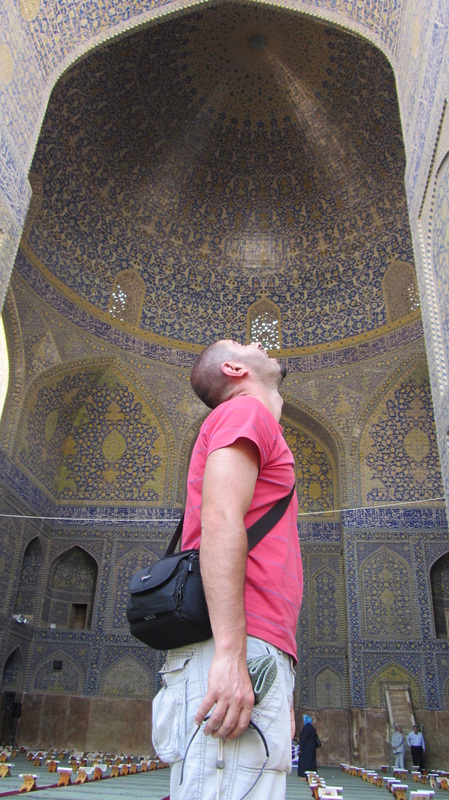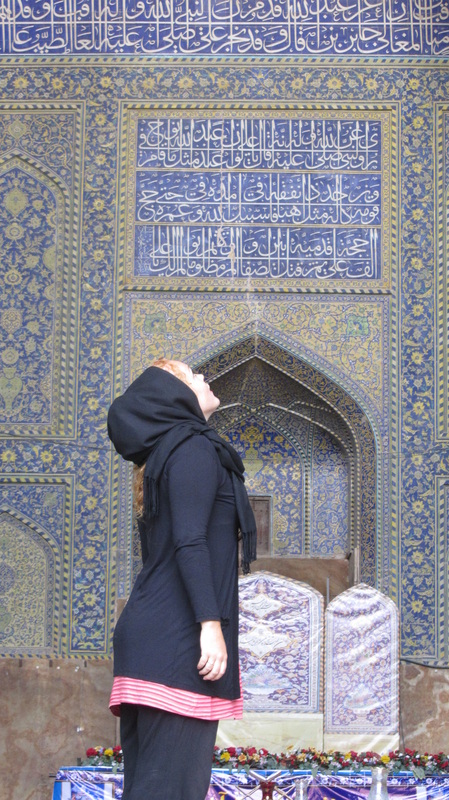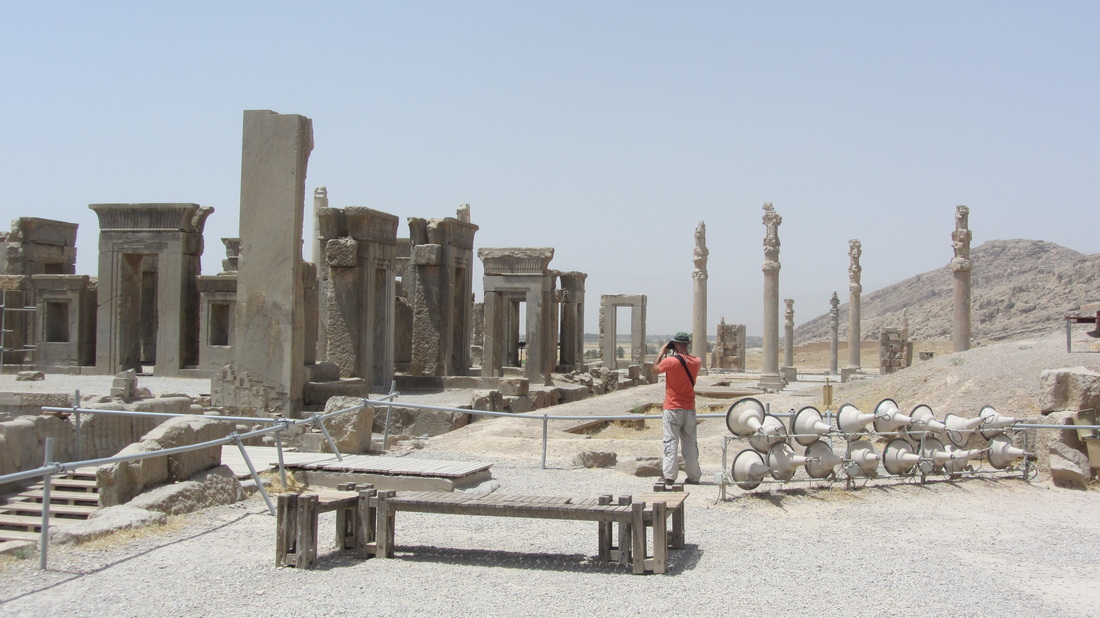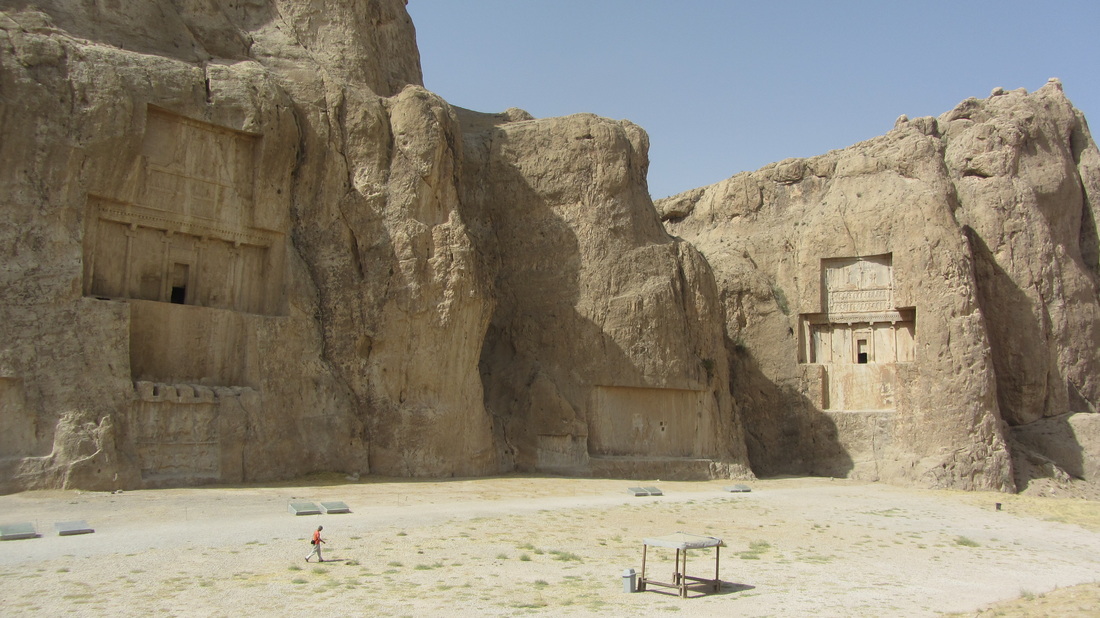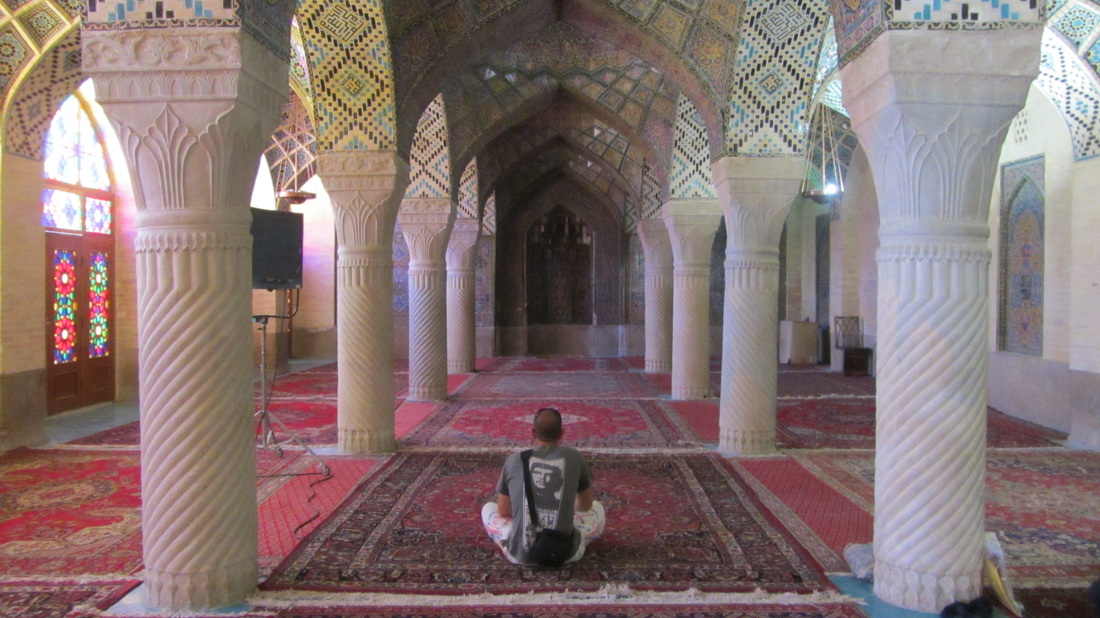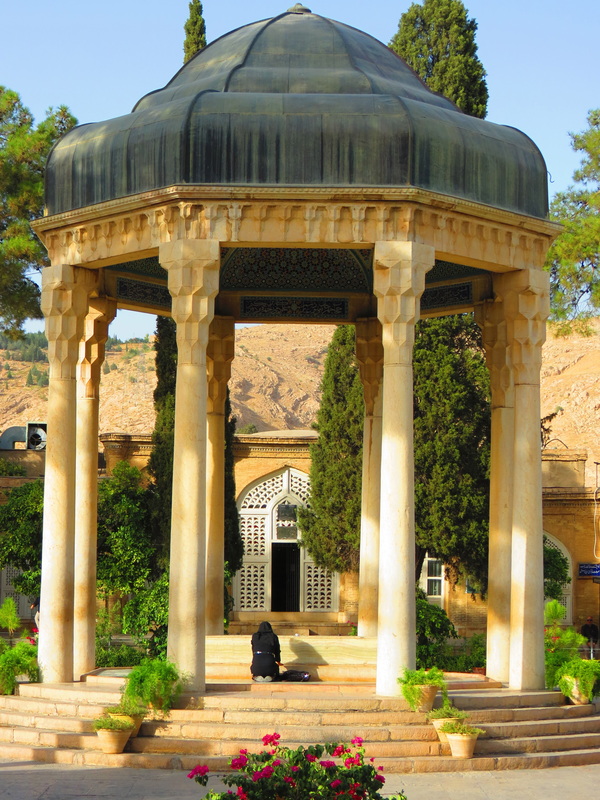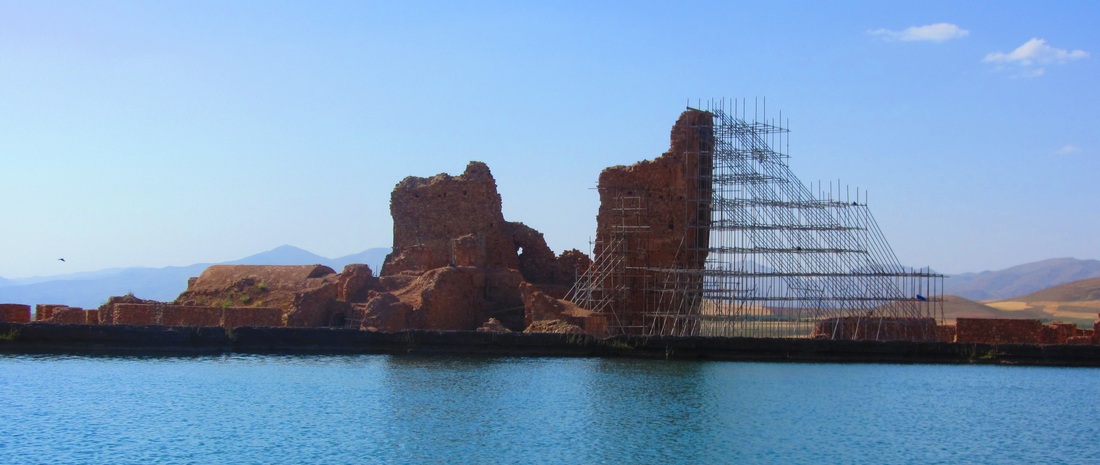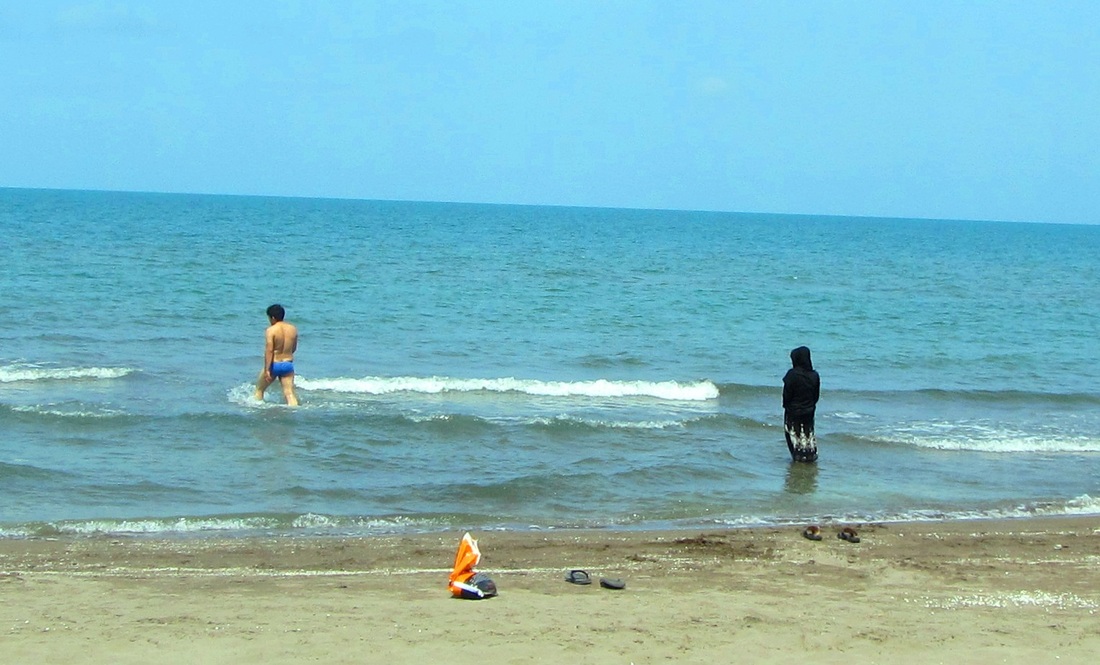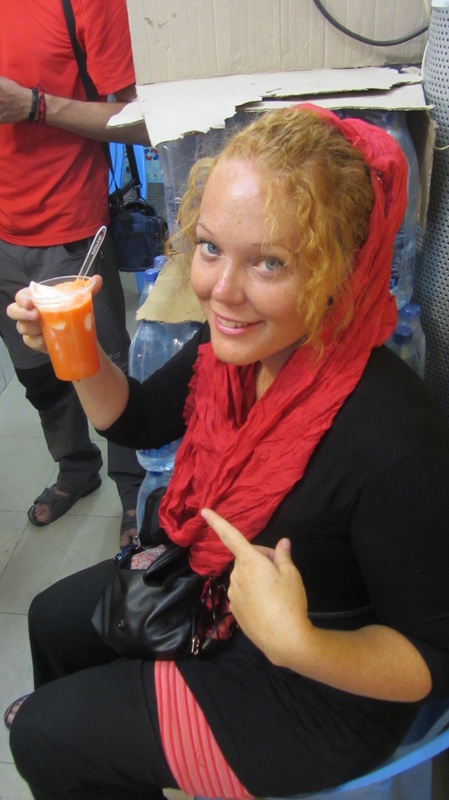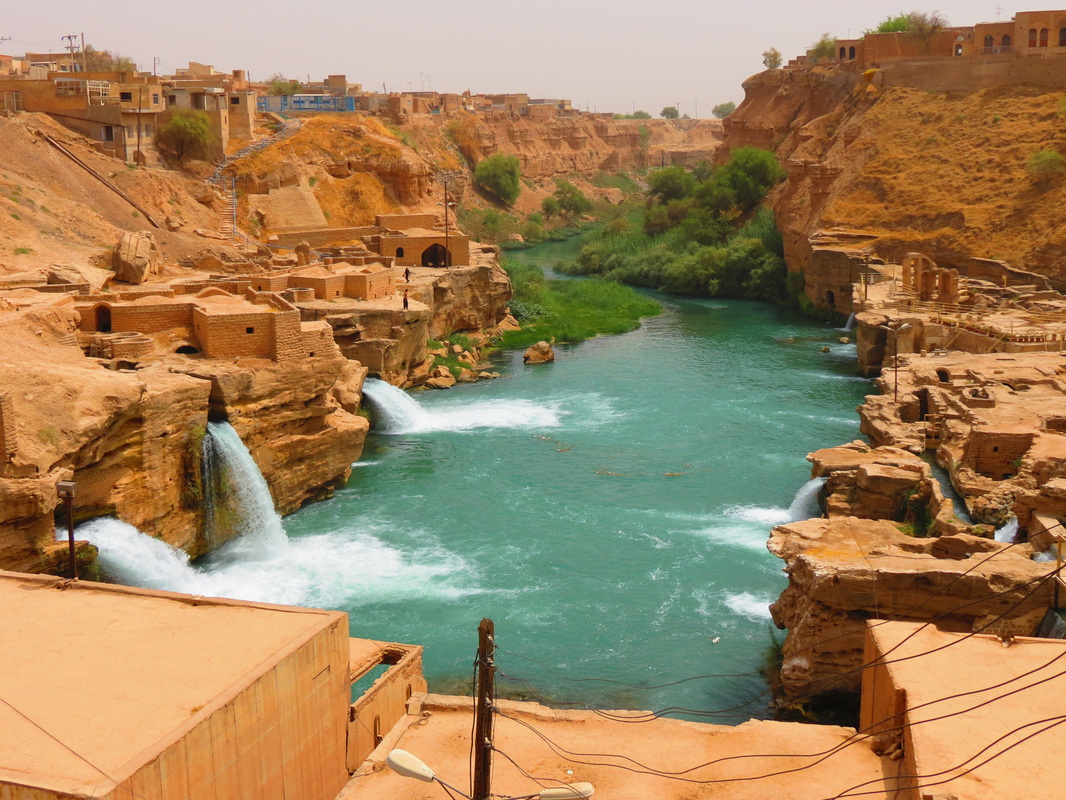Hitchhiking with a Hijab - IRAN!
10/08/2012 - Thanks Edrin for all the great photos!
|
When most westerners think about Iran, they think of a strict Islamic government, veiled women, stern-faced Ayatollahs and a certain 1979 embassy takeover. Sure, Iran is all of that, but of course it is the unrepresented side of a country that is the most interesting. And so after two years of thinking about traveling to Iran, talking about traveling to Iran, and hearing every second person say that traveling to Iran is far too dangerous for a solo, free-spirited western woman to contemplate, I was full of excitement and out to prove the skeptics wrong as I donned my hijab and stuck out my thumb in the direction of the border.
|
|
I arrived at the border in a beat up old Toyota with Iranian plates, excited because I’d heard stories of tough bag searches and mild interrogations about views on “Occupied Palestine” and Islamic law. Unfortunately no one interrogated me or even opened my bag; instead I was given the same high degree of hospitality that the Kurds at the Iraqi Kurdistan border had dished out – complete with tea, snacks and friendly small talk.
|
|
My first impressions inside the country were mixed. Driving away from the border the man I had a ride with got in a heated argument that came close to a ten-man brawl with the waiting taxi drivers over whether he was stealing their business by offering me a free ride. Continuing along we followed a potholed, partially flooded dirt road passing occasional villages where the only women visible were clad head to toe in black chadors, and at the first military checkpoint I felt a hint of nervousness as the guards took the better part of ten minutes to scrutinize my passport. Then as the driver who I crossed the border with reached his destination city and as I began the first of many challenging episodes I would have in Iran attempting to explain the completely foreign concept of autostop/hitchhiking, a car screeched to a halt next to us and an Iranian woman jumped out, screamed something at the driver before slamming the door, spitting on his car and then throwing his keys, which she had grabbed from the ignition, into the middle of the busy street. Apparently the taxi driver had tried something in the car that she was very, very unhappy about.
|
For me, the incident served two purposes. The first was to remind me that traveling safely by autostop as an unaccompanied woman in Iran would mean playing by the most conservative rules possible, such as never accepting rides from single men. But secondly, and more importantly, the incident was my first proof that despite all the restrictions in the country and the depiction in western media of veiled Muslim women as subservient and docile, Iranian women have an outgoing, outspoken brand of fire that is not to be messed with. This fact would later manifest itself in many ways: I would see Iranian women drivers not hesitating to yell out the window at men who had cut them off on the road; women heatedly debating politics with their male counterparts, meet internationally renowned female taekwondo athletes, and see that despite the law that women must be veiled, they have found way via makeup and subtle flirtations to exude the same, or more, sexuality than mini skirt clad women in the west; not to mention the inspiring novels I read written by Iranian women and hearing firsthand accounts of the central role women took in both the 1979 revolution and the 2009 attempted revolution. Even the Persian language is anti-sexist. After explaining to me that there are no genders in Farsi, not even a pronoun distinguishing he/she, a friend joked “in Iran we don’t like to make differences between girls and boys, but our government is religious and they make a difference.” Despite those government ideas, however, I learned quickly that in Iran there is something that protects the independence of the women from any laws, secular or religious.
|
Witnessing the ‘angry woman leaving car’ episode, plus seeing young couples holding hands, women dressed in style and driving cars, and streets and villages full of smiling children who happily offered free, fresh fruit to the passing foreigner, were what balanced my mixed impression on that first day in Iran. It already seemed clear that the rest of my time in the country would be filled with surprises and broken down prejudices.
|
|
Meeting my first CS host in Tabriz was a great example of how starkly different life in Iran can be from what the law says life in Iran is. Ronnie lives alone and has mullah-loving neighbors who are always looking for an opportunity to enforce the law, and since the two of us weren’t married or directly related the law says we should not be together alone, ever (especially not in his apartment). So to my amusement, we developed a system where whenever we went out I would tighten my shall around my face and walk quickly and sneakily out of the building five minutes ahead of him and wait down the street at a bus stop for him to decide the coast to is clear. Then he would pick me up, pretending to be a taxi, and we would drive directly to his friend’s house where the conservative clothing flew off and loud music and bottles of first-class Russian water were waiting. Youth all around the world are the same: the more control the government tries to enforce, the more creativity goes into finding the loopholes.
|
|
After a few days in Tabriz taking in student life, seeing a few interesting sights, and riding a mechanical bull at the city’s carnival (to the amusement of the large crowd that gathered to watch), it was time for me to hit the road south, hitching towards Hamadan. Anytime I hitchhiked in Iran I turned down a lot more rides than usual, making sure I only accepted cars where there were women or two seemingly modern men, i.e. clearly educated, speaking some English, and actually having an idea of what ‘autostop’ meant. Of course, this was difficult to find sometimes, and I often ended up spending a lot of time trying to explain with my few Farsi words why a solo foreign woman was standing on the side of the highway waving at passing cars (apparently the western hitchhiker’s thumbing sign means something equivalent to “f*** you” in Persian culture, which is not a message that a single woman standing on the side of a highway wants to send, so waving palm-down became the gesture).
|
|
Often times, once I finally found a suitable ride, the driver would try to convince me to take taxis and busses because autostop “will never work in Iran”. Of course, the irony of that statement was that the person saying it had already picked me up for a free ride, proving that autostop does work in Iran, even if the driver doesn’t know what he is doing. In fact, autostop in Iran was often an incredible experience. In almost every car I rode in I was offered a cup of hot tea from a thermos, even when it was Ramadan and the other occupants in the car were fasting. It often happened that the driver would insist on stopping for a picnic in a road side park or fruit orchard, and we would eat yellow watermelons and pick fresh apricots, apples and peaches from farmer’s trees. And many times there were sincere offers to stay or eat at the home of the driver. For a country without autostop, the people sure know how to treat a hitchhiker.
|
|
The city of Hamadan is one of the oldest continuously inhabited cities in the world, with confirmed settlements dating back at least to the Assyrians 3000 years ago. I put Hamadan on my travel list because Mohamad, an avid CSer, had invited me to stay with him and offered to take me to Ali Sadr, “the world’s largest water cave”. Riding the little paddle boat through the cave was incredible, but admittedly the whole time I was wishing to escape from the crowded tourist route and go on a solo expedition into the cave’s tantalizing depths.
|
|
After Hamadan it was finally on to Tehran, where I would secure a few onward visas and wait for a friend from Europe to join me for the southern road (Edrin has been a previous character in my travel blogs from Ghana and Albania). The day I arrived in the big city also corresponded to the start of Ramadan, which meant ample warnings from friends that I should not eat, drink or smoke in public during daylight hours. In practice however this wasn’t too much of a problem, especially for a foreigner. I often saw locals covertly smoking cigarettes or downing bottles of water in the heat. The revolutionary guards were on the lookout though – one time when I braved a drink from a concealed bottle of water while sitting in a park, two vehicles (one with female guards and one with males) pulled up next to me and a chador clad female revolutionary guard got out a walked briskly toward me with the authoritative air of someone about tell off a subordinate. However she must have realized I was a foreigner, because halfway to me she abruptly turned on a heel and walked back to the female van and they all drove off without a word. I was a little disappointed because I was curious to know what she would have said, but it was an amusing incident nonetheless. I smiled to myself and finished my drink, not so worried about hiding it anymore (admittedly though, twenty years ago, foreigner or not, I would have gotten a few lashes).
|
|
The couple I stayed with in Tehran were the epitome of hospitality. Despite the fact that they were fasting and that I tried to insist I would fast with them while in their home, they adamantly served me three meals a day and made me feel at home in every way possible. Ahmad, an avid motorcyclist, took me all around the city on his bike, from the infamous former US embassy (complete with “Down with USA” graffiti), to Tehran University (birthplace of revolutions), to multiple trips to the crowded Afghan embassy, and many covert places for shopping and enjoying life. Every evening at Iftar (the breaking of the fast) we sat around with members of Ahmad and Mariam’s extended circle of family and friends for elaborate meals of Ashk soup, stews, cheeses, olives, fruit and of course tea and dates.
|
|
Ahmad keeps interesting company, and at most of these Iftar gatherings there were intellectual, widely learned individuals, many of whom worked in government and were more than willing to engage a foreigner in political debate. Up until that point I had mostly interacted with people against government policy: students who had taken part in 2009’s Green Movement or hitchhiking with people who spoke no English but managed to make clear their political ideas by swearing in whatever language they thought I might understand: in the Azeri parts they tried Turkish: “Mullahs? Siktergit!!” or if the person knew a little German “Ahmadinahad, scheiße!” But Ahmad’s family was my first chance to hear the other side of things. Since the viewpoint I hear is usually vice versa, I had to bite my lip at the irony of having an Iranian diplomat tell me about American and Israeli terrorists: “yesterday our intelligence announced that we have captured the responsible terrorists”; but he had a point since he was talking about an Iranian physic who was brutally assassinated in front of his family. Everything in this world is about perspective.
|
|
Of course, the topic of sanctions came up too. The conversation on this touchy subject went something like this: America puts sanctions on Iranian government which don’t actually hurt that government much, only its people. Then the Iranian government points out to frustrated Iranians that they are suffering because America is evil and Iran needs to stick to its beliefs (justifying Islamic law) so as to combat the tyranny of America. And so, in the Iranian tradition of protests, Iranians take to the streets holding “Death to America” signs. America splashes pictures of these protests all over their news and then deliberately mixes talk of Iranian anti-American policy protests (note the protests are against American policy, not its people – Iranians understand the difference) with news about the Taliban and suicide bombing terrorists, meaning that in the heads of the majority of westerners the politics of the whole region turns into one big jumbled terrorist threat, and America succeeds in justifying in the eyes of its people sanctions and a potential war against Iran, winning it the big oil pipelines of the future. Of course, the news forgets to clarify that the Taliban and Al Qaeda have far more solid, undisputed links with certain Arab countries and with Pakistan, the latter which has confirmed nuclear weapons and a government far less stable than Iran’s. So the whole point of the sanctions is to steal oil and has little to do with national security. Well, at least our Aristotelian logic led us to a conclusion that we could have agreed upon from the beginning.
|
|
After a nearly a week of fun conversations like this, Edrin finally arrived and we began our action packed tour of central and southern Iran, trying to jam pack visits to as many of Iran’s incredible historical sites as possible in the two weeks he could squeeze out of his busy trans-Africa work schedule.
Next night it was on to Kashan, where we visited one of the oldest ziggurats on earth, Sialk, and then marveled at the luxurious Qajar era homes that are relics of the Shah days. That night we could not resist the temptation to take a desert safari where we played with camels, climbed a huge sand dune, swam (hijab-free!) in a pool next to a desert spring, and then slept under the stars atop a caravanserai before waking up at four a.m. to watch a glorious sunrise over a huge, mysteriously patterned desert salt ‘lake’.
|
Our first destination was Qom, the largest scholarly center for Shi’a Islam in the world, and one of the holiest pilgrimage sites in Iran since it is home to the 1200 year old shrine of Fatima, sister of Imam Reza (who is recognized by Shi’a Muslims as the seventh descendant of the prophet Mohamed). We spent the night CSing with a 21st century namesake of that holy woman, and she showed us around the city and then cornered us into recording an interview on ‘Islamaphobia’ for the English language religious education show she hosts on state television.
|
|
The pictures from the next few days speak far louder than words can. After Kashan we headed through quaint villages (and past a certain Iranian nuclear plant) en route to Isfahan, often called the most glorious city in the Middle East; “Isfahan is half the world”, as the proverb goes. We were not disappointed. We toured glorious old mosques, climbed to a Zorastrian fire temple, gaped at the size of Naqsh-e Jahan Square (second in size only to Tiananmen Square in China), stared in awe at the numerous architecturally splendid bridges crossing the presently dried up river, and were enchanted by the old palaces and their magnificent gardens. However the most incredible moment of ours (and likely anyone’s) Isfahan trip was walking into the courtyard of the Jameh Mosque, which must be one of the most incredible in the world; Edrin eloquently called it a “culture orgasm.” In my mind it immediately became a contender with Istanbul’s Sultanahmet Mosque as the most beautiful Islamic architecture I have ever seen. Once again I refer you to the pictures, although they cannot capture the majesty of seeing the sights in person.
|
|
After Isfahan we passed through Yazd, where we took up the Iranian tradition of camping in a public park, and then spent the day walking around the ancient bazaar before dining on a delicious bowl of camel stew for lunch. Persepolis, Pasargad (tomb of Cyrus the Great), and Naqsh-i Rustam (tombs of the graves of Darius, Xerxes and Artaxerxes) were next – by the end of that day walking in the hot sunshine we were exhausted, but the walk through history was worth it.
|
|
Next up it was my turn to insist on a destination, and I dragged Edrin 200 km out of our way just so I could dip my feet into the warm waters of the Persian Gulf. Unfortunately the spot we chose arbitrarily off the map smelled like raw sewage and was right next to the road, so that I got told off by a spying revolutionary guard for rolling up my pant legs and letting my scarf fall off while running around in the shallow water (while it was somehow okay for us all to be cursed with the sight of fat hairy men swimming in speedos nearby). Nevertheless I was content that I could stare out at the water and pretend to see Kuwait and Saudi Arabia in the distance.
Back in the capital, my friend Ahmad once again came to the rescue by giving us a comfortable place to stay, cold showers, hot food and great company. This time he went one step farther by offering to lend us his old, beat up but strong-willed Iranian made pickup so we could travel the mountains in style for Edrin’s last days in Iran. Putting slowly along in the old pickup, we made our way to two of the awesomely impressive Castles of the Assassins, each perched impossibly atop mountains. Next we passed along more winding mountain roads and tiny settlements, shocking villagers who had clearly never seen foreigners driving such a vehicle. The last ancient destinations on our route were the various sights in Zanjan and the incredible historically diverse Takht-e Soleyman; now we felt we had truly gotten our fair share of Persian history.
One last night of camping and a final meal of bread and cheese, and it was time for Edrin and I to head back to Tehran. We saved just enough time for a visit to Ayatollah Khomenei’s shrine, a sensible end to our trip since he was the one who ended 2500 years of the Persian state.
|
Leaving the Gulf we started circling back north, passing through the hottest place I have ever been in my life – Khuzestan – to see some incredible Mesopotamia style ruins. We visited an ancient waterworks system in Shushtar, the Shrine of Daniel and an Achamenian palace in Shush, and the impressive Choga Zanbil, a huge, perfectly preserved Elamite ziggurat located deep in the desert. The day we visited Kuzestan the temperature was something approaching 60*C, and as we stood outside hitchhiking or staring at ancient structures, covertly trying to drink anti-Ramadan water as both our bodies fought to keep themselves from evaporating into the heat, I think we both realized we had crossed the threshold of being truly crazy tourists. Needless to say that night we were happy to head back north to the cool northern mountains of Tehran.
Our last day we spent sputtering along in our fancy ride back across the mountains to reach the Caspian Sea, take a proper swim, and enjoy the green side of Iran. Swimming was fun, and the road trip was nice, but personally the best part of this stretch of travel was that I finally got a chance to pick up hitchhikers. Three different times we found unsuspecting passengers. The first guy jumped in the back for a short ride up a mountain and then offered us a plethora of directional advice as a way to say thanks. The next was an old man who spoke not a word or English, and couldn’t understand any of my fledgling Farsi. He indicated he didn’t want to sit in the back of the pickup, so much to the discomfort of me and especially Edrin he squeezed into the tiny cab with us for what turned into a long, very uncomfortable ride. The third hitchhikers were two guys in their late twenties, both of whom looked a little rough around the edges and dressed in traditional clothing with a long beards. These two guys got us stopped by the police twice. The first time the officer asked for all my identification and then searched our bags. When our hitchhikers asked the cops why they were so worried, the cop answered something along the lines of “you look like Taliban, there must be something wrong with these foreigners if they picked you up.” The delays were annoying but breaking down a stereotypes in a few minds is always worth it.
Now Edrin has long since been home, and after I visited one last Iranian destination – Mashhad and the biggest Shi'a shrine in the world, that of Imam Reza himself – and attended one last Iranian house party, I crossed into Afghanistan. The next blog will surely clarify a few more misconceptions.
|


